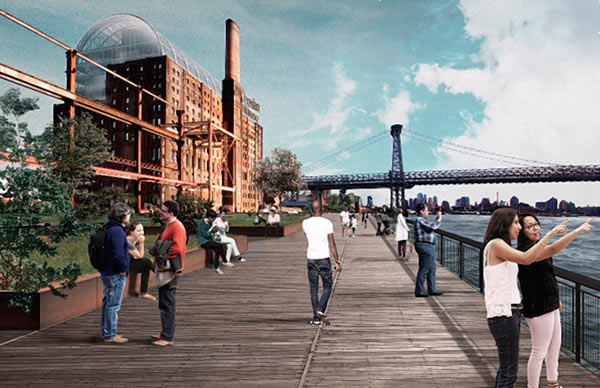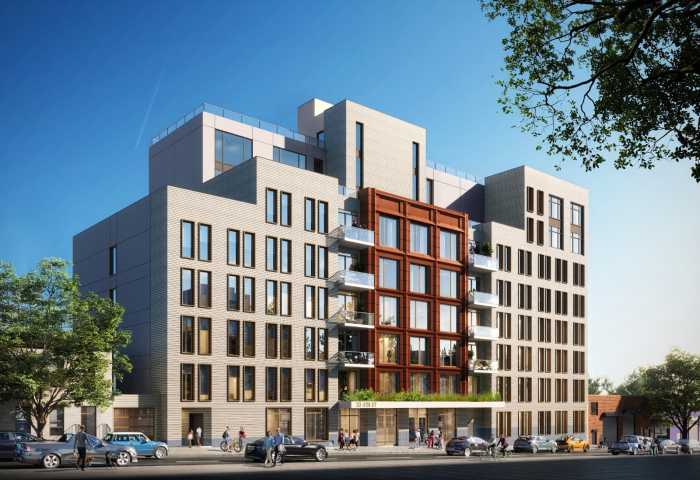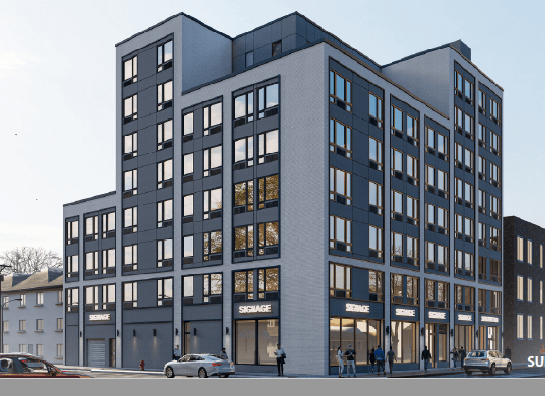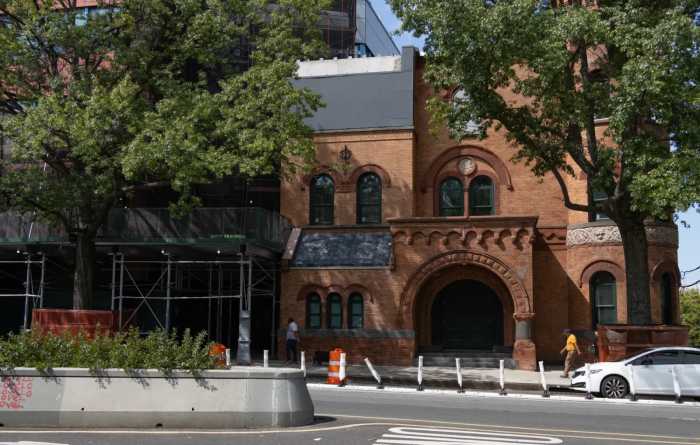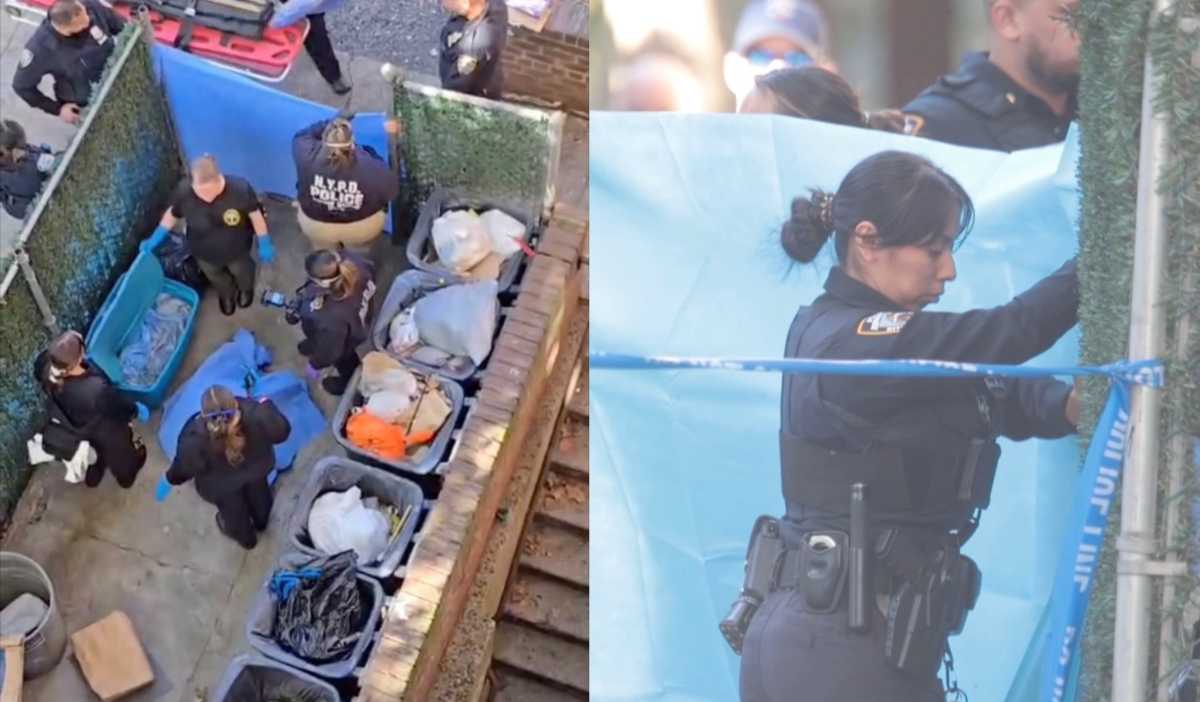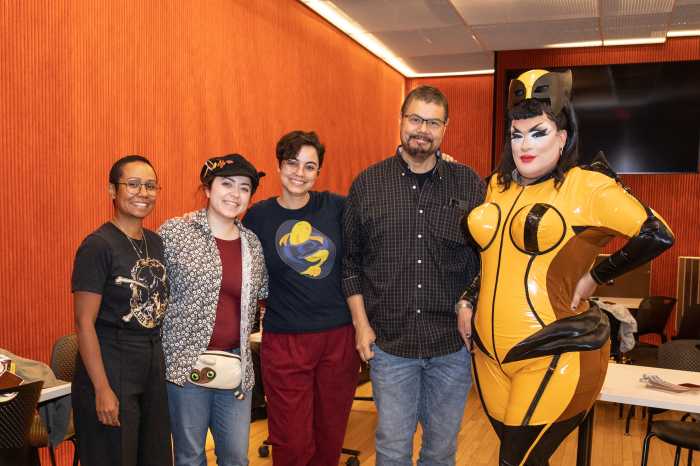It’s a refinery redefined.
A developer will transform the old Domino Sugar factory’s landmarked refinery building into a futuristic glass-and-brick office space following the Landmarks Preservation Commission’s Nov. 28 vote to approve the design. The greenlit proposal — which a new architect created after the building’s owners scrapped the first landmarks-approved makeover — is a sweet way to preserve the waterfront structure’s heritage while turning it into a contemporary workspace, according to a leader of the project.
“The new plan is better for everyone,” said David Lombino, who works for developer Two Trees, which is overseeing the conversion. “It honors and highlights the landmark; provides a flexible, modern, and totally unique office experience; and welcomes the public to enjoy this great piece of New York’s history.”
Honchos at the Brooklyn-based real-estate company in October tapped architect Vishaan Chakrabarti from Practice for Architecture and Urbanism to make over the 19th-century Kent Avenue structure that once churned out Domino’s sweet stuff.
His design calls for creating a glass-encased office space with a barrel-vaulted roof that is surrounded by the refinery’s outer walls and set back from the brick exterior, allowing sunlight and air to flow freely between the building’s old and new components, according to information from the developer. It will also include a courtyard and ground-floor space for to-be-announced restaurants and shops, as well as public bathrooms.
The architect’s predecessor proposed a similar concept — a glass-enclosed office within the refinery’s current exterior — but the crystalline workspace in that version butted against the brick walls, instead of being set back from them. Landmarks commission members approved that plan in 2014, but the developer ultimately decided to scrap it out of fear it would result in a dark, unwelcoming space that could drive tenants away, according to a New York Magazine report.
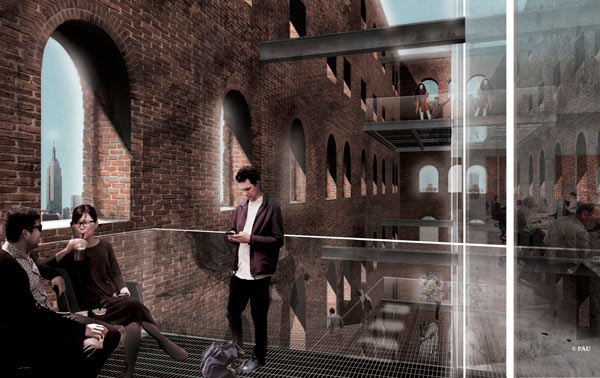
Chakrabarti first presented his design to the landmarks agency in late October, but commissioners tabled their vote and told him to come back with more specific details about how he would protect the brick facade, construct the glass vault, and maintain the industrial feel of the building’s masonry openings.
The architect seemed to win the preservationists over the second time around, however, because they voted eight to one to approve his proposal.
And as promised, the iconic Domino Sugar sign, which workers ripped from the exterior of the landmarked building in 2014, will be placed atop it once construction wraps, according to a rep for the developer, who could not confirm a completion date although previous reports claimed work will wrap around 2020.
The refinery sits in the middle of the old Domino Sugar Factory site that Two Trees is transforming in its mega-development project, which will include a total of five residential and commercial buildings and a park on the sprawling parcel at the edge of the East River.
This summer, tenants moved into the first of the complex’s residential buildings, a 16-story high-rise at the foot of S. Fourth Street that includes an elevated courtyard, a roof deck, a health club, a lounge, and a chef’s kitchen for catering.



